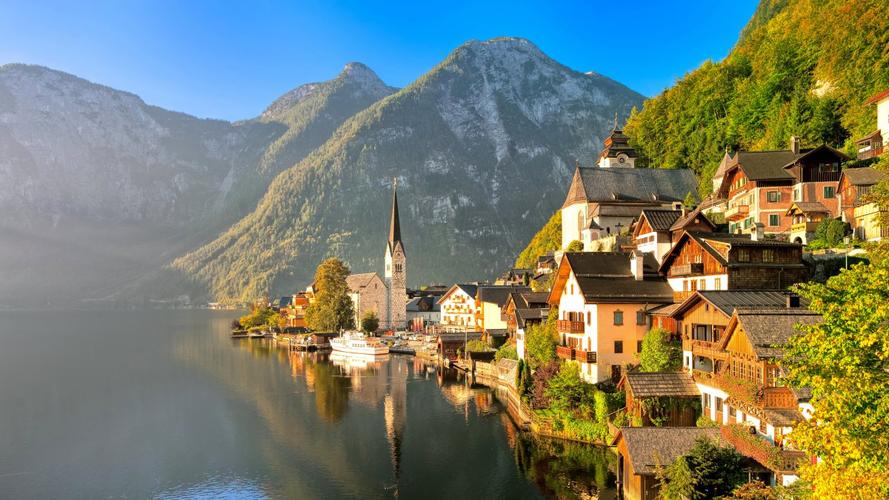The Influence of Islam on the Cultural Landscape: Exploring the Architecture, Art, and Rituals of Islamic Traditions
Islam is widely practiced around the world and has had a significant impact on various aspects of culture, including architecture, art, and rituals. The influence of Islam on the cultural landscape can be seen in the beautiful mosques, intricate calligraphy, and vibrant festivals celebrated by Muslims globally. In this article, we explore the impact of Islam on the cultural landscape and how it has shaped our world today.
The Architecture of Islamic Traditions
One of the most visually striking ways that Islam has influenced the cultural landscape is through its architecture. Mosques, in particular, are architecturally unique and have become an iconic symbol of Islamic tradition. The intricate geometric designs and patterns, the use of calligraphy, and the careful attention to detail in each element of the mosque reflects the core tenets of Islamic beliefs, centered around unity and precision. Furthermore, the Minaret of a mosque, which is a tall, slender tower usually situated at one of the corners of the mosque, serves as a place of prayer and is an important element of Islamic architecture.
The design of these towers also reflects the Islamic concept of verticality, which emphasizes the connection between heaven and earth. Islamic architecture is not only limited to mosques but also extends to mausoleums, palaces, and public buildings. The Taj Mahal in India, one of the most famous examples of Islamic architecture, is a stunning example of the blending of Islamic and Mughal styles of architecture. The building’s intricate details, symmetrical form, and the beautiful use of white marble and precious stones make it a cultural icon.
The Art of Islamic Traditions
Islamic art is another area where the influence of this religion can be seen. Islamic art is characterized by its intricate geometric patterns, calligraphy, and the use of vibrant colors. Islamic art is also recognizable by its focus on decorative elements, and the representation of living beings is often limited. Instead, Islamic art typically depicts patterns and calligraphy that express the values underlying the religion, including the pursuit of beauty, the importance of faith, and the necessity of community.
One of the most significant examples of Islamic art is the use of calligraphy in the Quran. Arabic calligraphy has been used to represent the words of the Quran since the seventh century and showcases the beauty of the Arabic language. In addition to its use in the Quran, calligraphy is also used extensively in the decoration of mosques, mausoleums, and other public buildings and has become an essential element of Islamic architectural and artistic traditions.
The Rituals of Islamic Traditions
Finally, the rituals of Islamic tradition have also helped to shape the cultural landscape. One of the most significant religious practices is the Hajj, an annual pilgrimage to Mecca that all Muslims who can afford it are required to make at least once in their lifetime. The Hajj is a spiritual experience that reinforces the unity of the Muslim community and is considered one of the most important aspects of Islamic faith.
Another essential ritual of Islamic tradition is the observance of the five daily prayers. Muslims around the world pray at specific times each day facing toward Mecca, further reinforcing the unity and directionality of the Muslim community. Additionally, the observance of Ramadan, a month of fasting, is an essential aspect of Islamic faith and demonstrates the importance of self-discipline and sacrifice.
Conclusion
In conclusion, the influence of Islam on the cultural landscape can be seen in the architecture, art, and rituals of Islamic tradition. The use of intricate geometric patterns, calligraphy, and vibrant colors in Islamic art helps to express the religion’s values of faith, beauty, and community. Mosques and other buildings showcase the importance of unity and precision in Islamic architecture. Finally, the essential rituals of Islamic tradition, such as the Hajj and daily prayers, demonstrate the importance of community, directionality, and self-discipline in Islamic faith. These cultural elements of Islam have helped shape our world today and continue to influence art, architecture, and daily rituals.
(Note: Do you have knowledge or insights to share? Unlock new opportunities and expand your reach by joining our authors team. Click Registration to join us and share your expertise with our readers.)
Speech tips:
Please note that any statements involving politics will not be approved.
